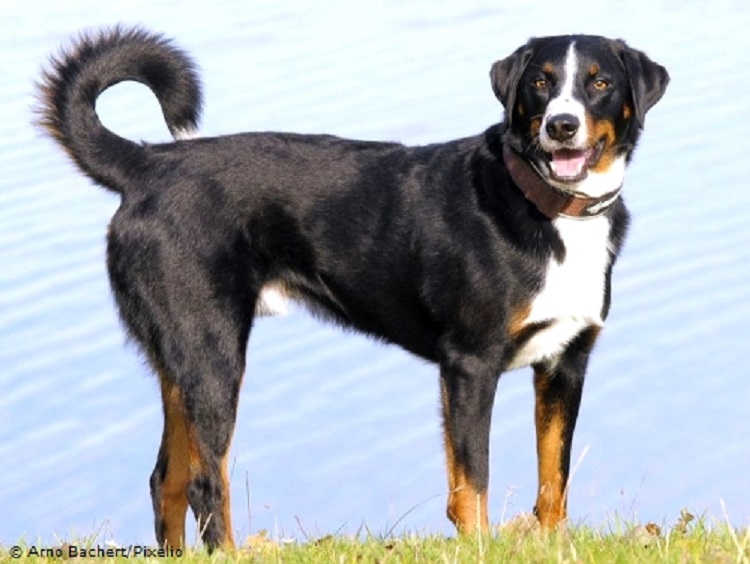
Appenzeller Sennenhunde

Navigate through the tabs
Navigate through the tabs below to view the breed's info of your interest.
The breed's info is divided in four sections; namely:
the breed's history ,
the breed's main stats ,
the dog's potential health issues
and finally, how the breed scored in 26 different categories.
All the above information should give you a respectively good overview for the dog of your interest.
Dog Breed's Main Info
The Breed's History:
The Appenzeller Sennenhund is descended from the general Sennenhund type which may have existed in antiquity, or descended from "cattle dogs left there by the Romans", but the first breed club for the breed was founded and the stud book for the breed started in 1906 by Albert Heim and others, who wrote the first breed standard in 1916. An early reference to the breed's predecessors was made in an 1853 book, "Tierleben der Alpenwelt" (Animal Life in the Alps), referring to dogs in the Appenzell region.
The Appenzeller Sennenhund was only recognised internationally as a separate breed in 1989.
The Appenzeller Sennenhund was originally kept primarily as a cattle herding dog, and a flock guardian. It was also used as a draft dog, and general farm dog. The breed also was known for its affinity to both herd and guard with such devotion that they would give their life to protect their charge. Today the breed is primarily kept as a companion, and excels in agility-flyball competitions, obedience competitions and Schutzhund. They are also still used in many places as working cattle dogs even now.
They are highly intelligent, and learn quickly.
Country of Origin:
Switzerland
Breed Group:
Sporting
Height:
1 foot, 6 inch. to 1 foot, 11 inch. (45,72 to 58,42 cm)
Weight:
49 to 70 pounds (22,22 to 31,76 Kg)
Life Span:
12 to 13 years
Potential Health Issues:
Although health studies have not been conducted on the Appenzeller Sennenhund, they have been for a number of closely related breeds. Based on these studies, the breed may be susceptible to the following conditions:
Elbow Dysplasia,
Progressive Retinal Atrophy (PRA),
Cataracts,
Hip Dysplasia,
Gastric Torsion (Bloat),
Demodicosis,
Demodectic Mange (Demodex Mange),
Hemolytic Anemia,
Epilepsy,
Entropion,
Ectropion
Adaptability
Apartment Living:
First Time Owners:
Sensitivity:
Being Alone:
Cold Weather:
Hot Weather:
Friendliness
Affection With Family:
With Kids:
With Dogs:
With Strangers:
Health and Grooming
Shedding:
Drooling:
Easy To Groom:
Overall Health:
Weight Gain Potential:
Size:
Training
Easiness:
Intelligence:
Mouthiness:
Prey Drive:
Barking or Howling:
Wanderlust:
Need For Exercise
Energy Level:
Intensity:
Exercise Needs:
Playfulness:
Our Mobile Application
Check out Our Mobile Application "Dog Breeds Central"
